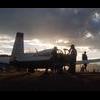Mooney IFR Students' Thread
-
Members Online
- ElkoRandy20J
- ad5ut
- ragedracer1977
- DCarlton
- Shadrach
- N231RF
- M20R
- exM20K
- hubcap
- Scott Ashton
- 7.Mooney.Driver.0
- tls pilot
- AH-1 Cobra Pilot
- stevesm20b
- anthshua
- NickM20F
- 2659AU
- SilentT
- Falcon Man
- Steve Dawson
- Hank
- DonMuncy
- Samir13k
- Yetti
- Ragsf15e
- varlajo
- icurnmedic
- kortopates
- Fly Boomer
- ta2too
- Slick Nick
- 201Mooniac
- OR75
- hammdo
- Andy95W
- PT20J


Recommended Posts